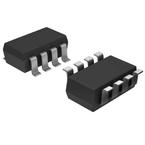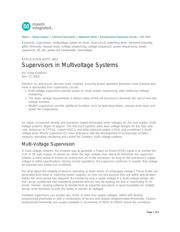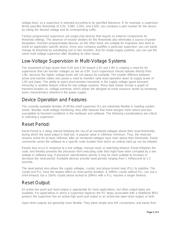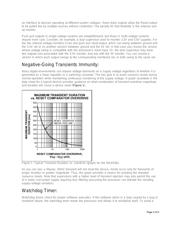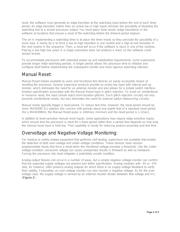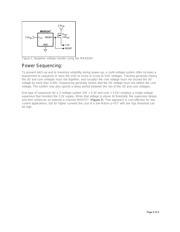下载

Maxim > Design Support > Technical Documents > Application Notes > Microprocessor Supervisor Circuits > APP 2853
Keywords: supervisors, multivoltage, power on reset, reset circuit, watchdog timer, transient immunity,
glitch immunity, manual reset, voltage sequencing, voltage sequencer, power sequencing, power
sequencer, pfi, pfo, power fail comparator, overvoltage
APPLICATION NOTE 2853
Supervisors in Multivoltage Systems
By: Greg Sutterlin
Nov 17, 2003
Abstract: As processors become more complex, ensuring proper operation becomes more involved and
more is demanded from supervisory circuits.
Multi-voltage supervisors provide power-on reset, proper sequencing, and continuous voltage
monitoring.
The lower voltage requirements in today's state-of-the-art processors demands the use of new low-
voltage monitors.
Modern supervisors provide additional functions such as watchdog timers, manual reset input, and
power fail comparators.
As higher component density and processor speed demanded lower voltages for the core supply, multi-
voltage systems began to appear. The first such systems were dual-voltage designs for the logic and
core. Advances in FPGAs, custom ASICs, and other products added a third, and sometimes a fourth,
voltage level. Maxim supervisor ICs have kept pace with the development of increasingly complex
products, providing monitoring and control for complex, multi-voltage systems.
Multi-Voltage Supervision
In multi-voltage systems, the simplest way to generate a Power on Reset (POR) signal is to monitor the
3.3V or 5V logic supply. At power-up, when the logic voltage rises above its threshold, the supervisor
initiates a reset period to ensure an orderly turn-on of the processor. As long as the processor's supply
voltage is within specifications (during normal operation), the supervisor continues to monitor that voltage
for transient and brown-out conditions.
But what about the integrity of devices operating at lower levels of core/supply voltage? Those levels are
generated from linear or switching power supplies, so how can you assume they are within specification
before the reset period has elapsed? By monitoring only a single voltage in a multi-voltage design, the
risk can go undetected that improperly powered devices may be loading the bus or responding in an
erratic manner, causing software to deviate from its expected procedure. A good foundation for reliable
design must therefore include the ability to monitor all voltages.
Available supervisors can monitor two, three, or even four supply voltages, either with factory-
programmed thresholds or with a combination of factory and resistor-programmable thresholds. Factory-
programmed thresholds are usually available in increments of 50mV to 100mV below the monitored
Page 1 of 9

